Renter friendly garden advice for beginners
Just because you don't own it, doesn't mean you can't make it feel like home. Grow it like you're there to stay.
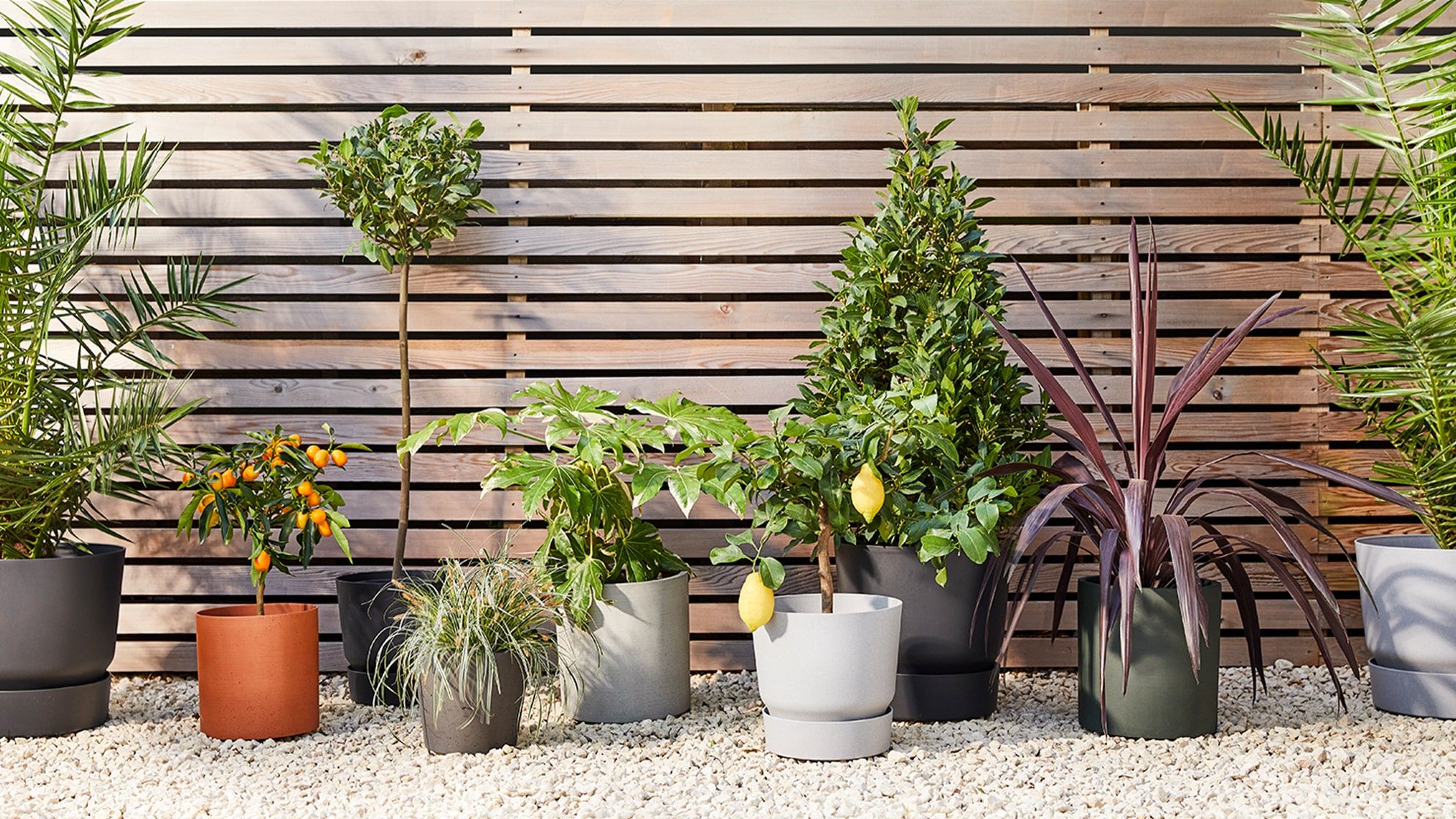
If you, like many, are stuck in the renting cycle but desperately want a garden to call your own, all is not lost. Whether you have a courtyard, patio, patch of lawn, terrace or balcony, you can get your green on. Check out our specially curated renter friendly range to get you started.
Maybe you’re worried about the financial investment of starting a garden when you’re in temporary accommodation. We say, don’t let this put you off! Life is short, make it beautiful. The beauty of plants in pots is that they’re portable. Even plants in the ground can be taken with you, whether you collect seed, take cuttings or dig the plant up.
We don’t want to get you in trouble so please check your tenancy contract: do you have permission to have potplants or to introduce your own plants to the garden? If your contract doesn’t say, then it’s always worth asking.
Before we talk about the hows and whys, there’s a few things to consider before you get going:
- What’s your budget
- What’s your aesthetic
- Light levels and exposure
What’s your budget
You don’t need to break the bank to start a garden. For some plants it’s as simple as growing them from seed on your windowsill. Sunflowers, Sweetpeas and Nasturtiams are all easy starters. If that’s too much of a hassle, there are many suppliers that sell another affordable option, what in Horti jargon we call ‘plugs’. Plugs are little modules that have seedlings or young plants that have been started off by the Grower. You can pop these straight into a pot of compost and within a few weeks they’ll be romping.
The more expensive option but the one that gives you immediate effect, is to buy established plants in sizes ranging from 1litre upwards. The more unusual or difficult the plant is to grow, and the larger or more established it is, the more you’ll pay. People are often shocked at the cost of plants but remember, you’re not just paying for the plant but the time, energy, attention and ideal growing conditions that have gone into growing it; luxuries many of us don’t have.
Pots are often the most expensive part of a container garden. There’s a vast range available, from beautiful glazed terracotta to plastic and fibreglass. Remember that the heavier the pot, the more of a hassle it will be to move.
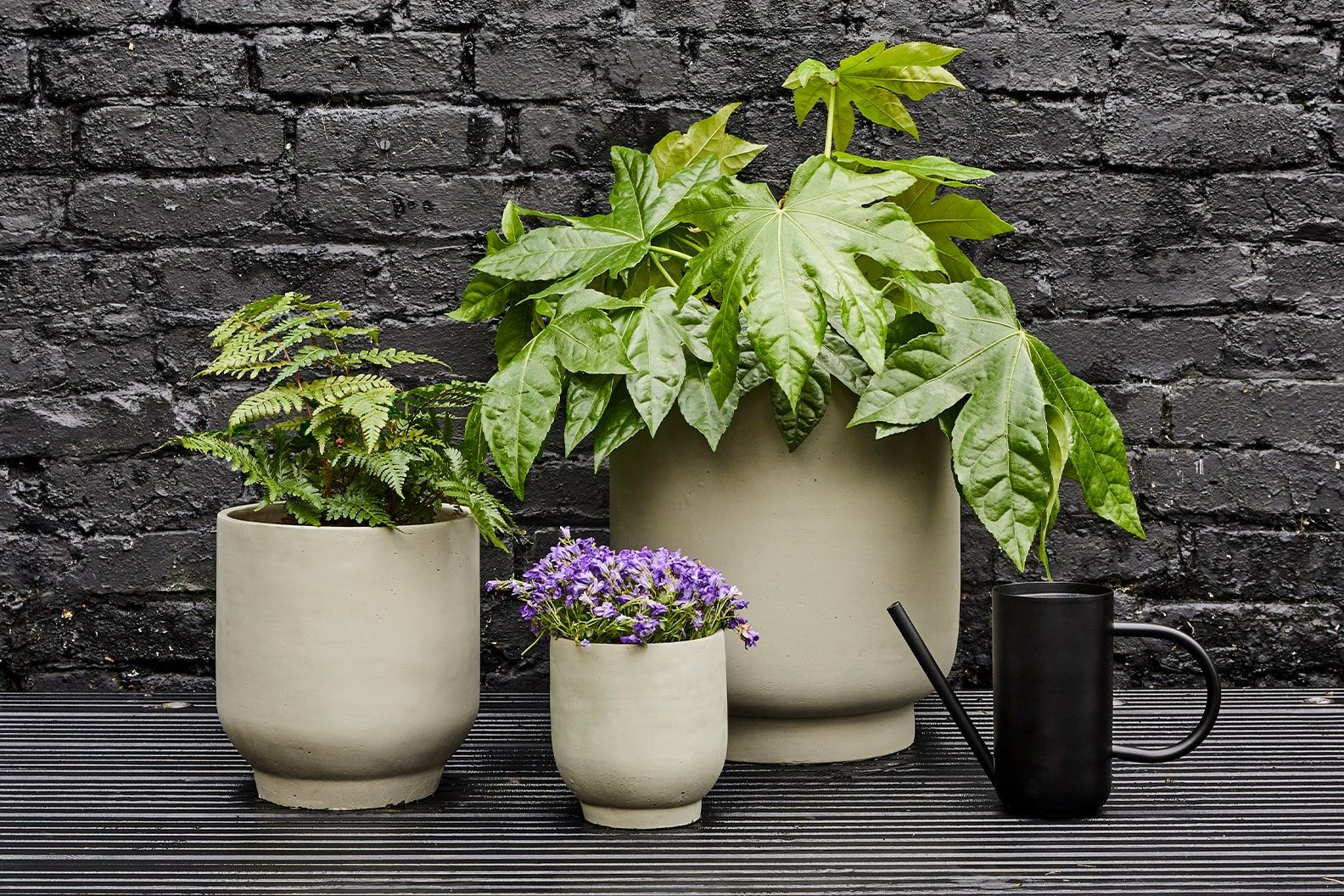
What’s your aesthetic
You may have already been inspired by gardens or plants you’ve seen. If so, do they reflect a certain style? If you’re starting with a blank canvas, it’s a good idea to do some research on different garden aesthetics, both for inspiration and to help direct your energy and finances. Some key ‘garden style’ search terms include: classical, cottage, modern, jungle, zen/Japanese, dry/Mediterranean, wildlife.
The style you choose will determine the kinds of plants you’ll buy, but it’s as important to consider your growing conditions and whether they’re compatible with your aesthetic preference. If you live in the north of the country, for instance, a dry garden might not be possible given the amount of rainfall. And if you have an exposed, windy terrace, then trying to create a tropical garden isn’t likely to work when what you need is a warm, sheltered spot.
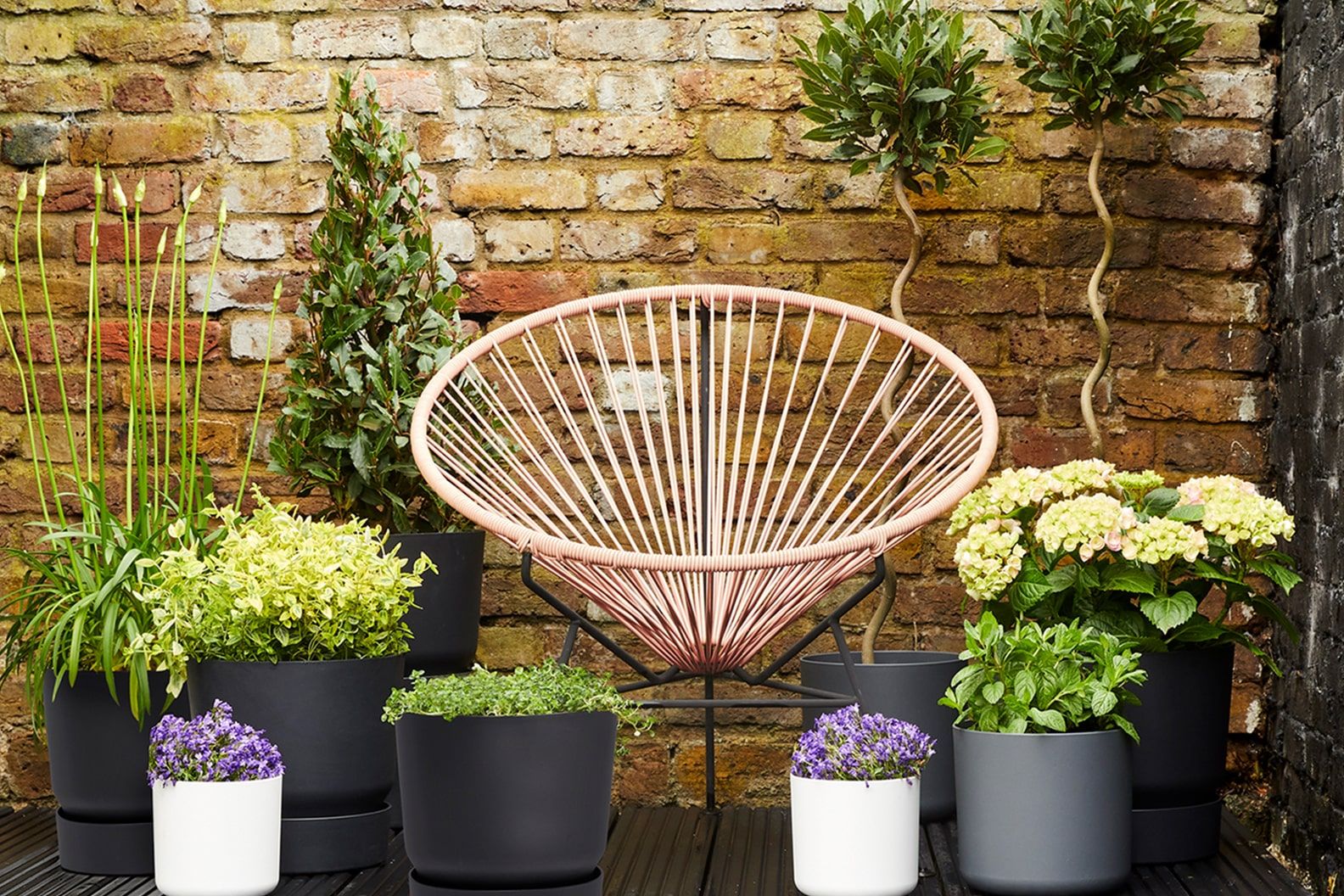
Light levels and exposure
Light is the equivalent of food for your plants, and plants vary as to how much they need. How much light your outdoor space gets will help determine what plants will grow best. Tropical plants generally need much more direct light than cottage garden plants which can tolerate light or shade for instance.
Whether your outdoor space is sheltered from wind or exposed to gales will also influence your plant choice. Japanese Maples, for example, hate wind because it burns their leaves, so going for a Zen aesthetic might not be the wisest move.
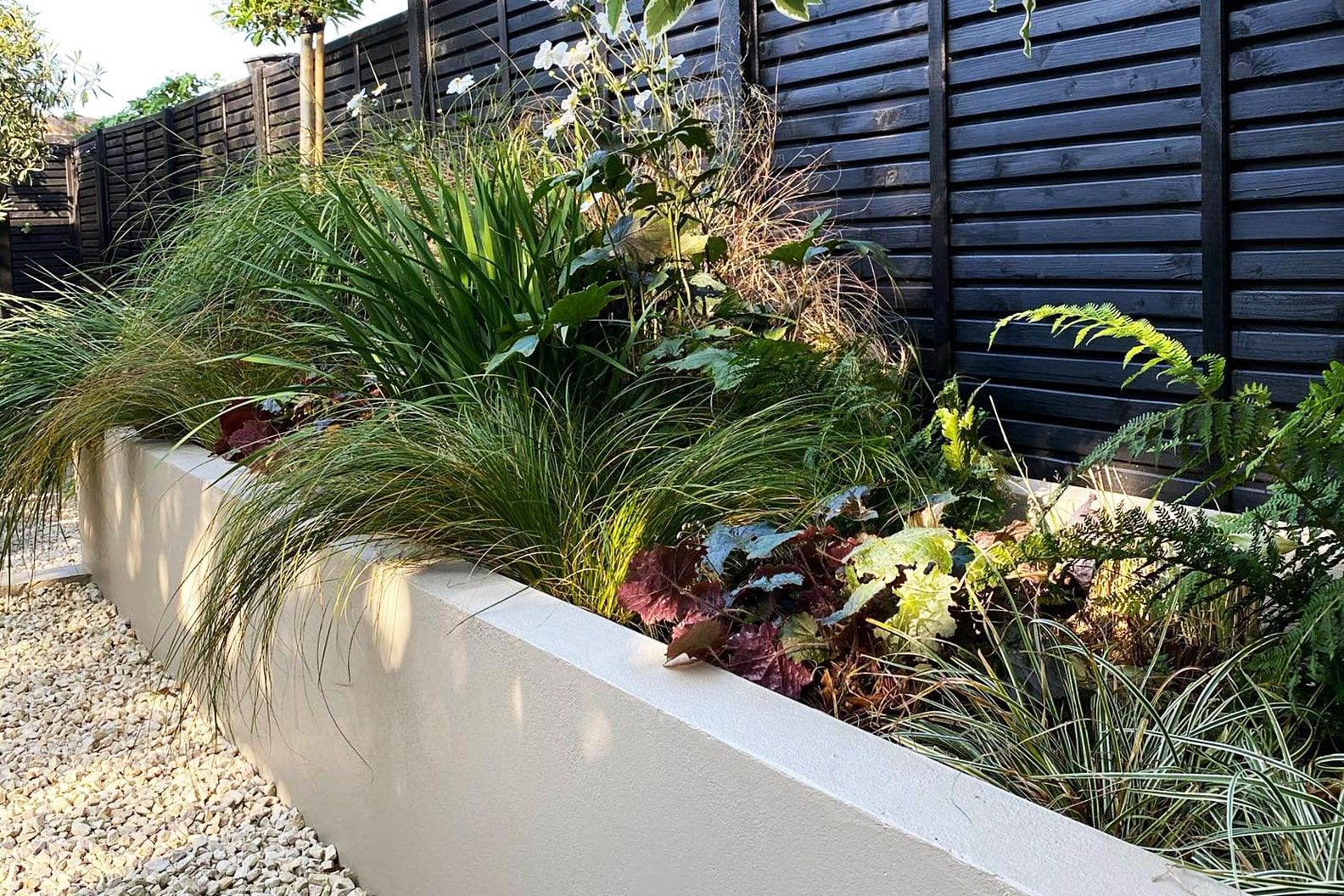
Even with the tiniest, narrowest balcony in the most built up urban environment, you can create an oasis. Here are some of our top tips and tricks for gardening in rented spaces:
- Make an impact by grouping plants. This can have the added effect of creating a screen and providing some privacy, as well as softening hard corners. Mix larger, medium and smaller plants and pots to create a layered effect. Mix and match plants that are evergreen (hold their leaves all year round) and which will provide the structure and backbone of your planting, with deciduous (plants that lose their leaves or die back over winter), and annuals (plants that grow and die within the same year). Trailing plants can spill over the edges of pots to add flow to your display.
- Grow easy edible flowers and other crops in pots so that your garden is not only ornamental but productive too. This can range from fruit trees to nasturtiums. Herbs are great too. They are beautiful and useful. Whether or not you use them in the kitchen or as part of your beauty regime, they will bring scent to your space and are a great source of nectar for pollinators.
- Don’t grow anything too large and prune your plants to keep them a manageable size. If you’re growing a climbing plant, make sure it’s attached to a frame. Sometimes they can do damage to walls if allowed to attach freely.
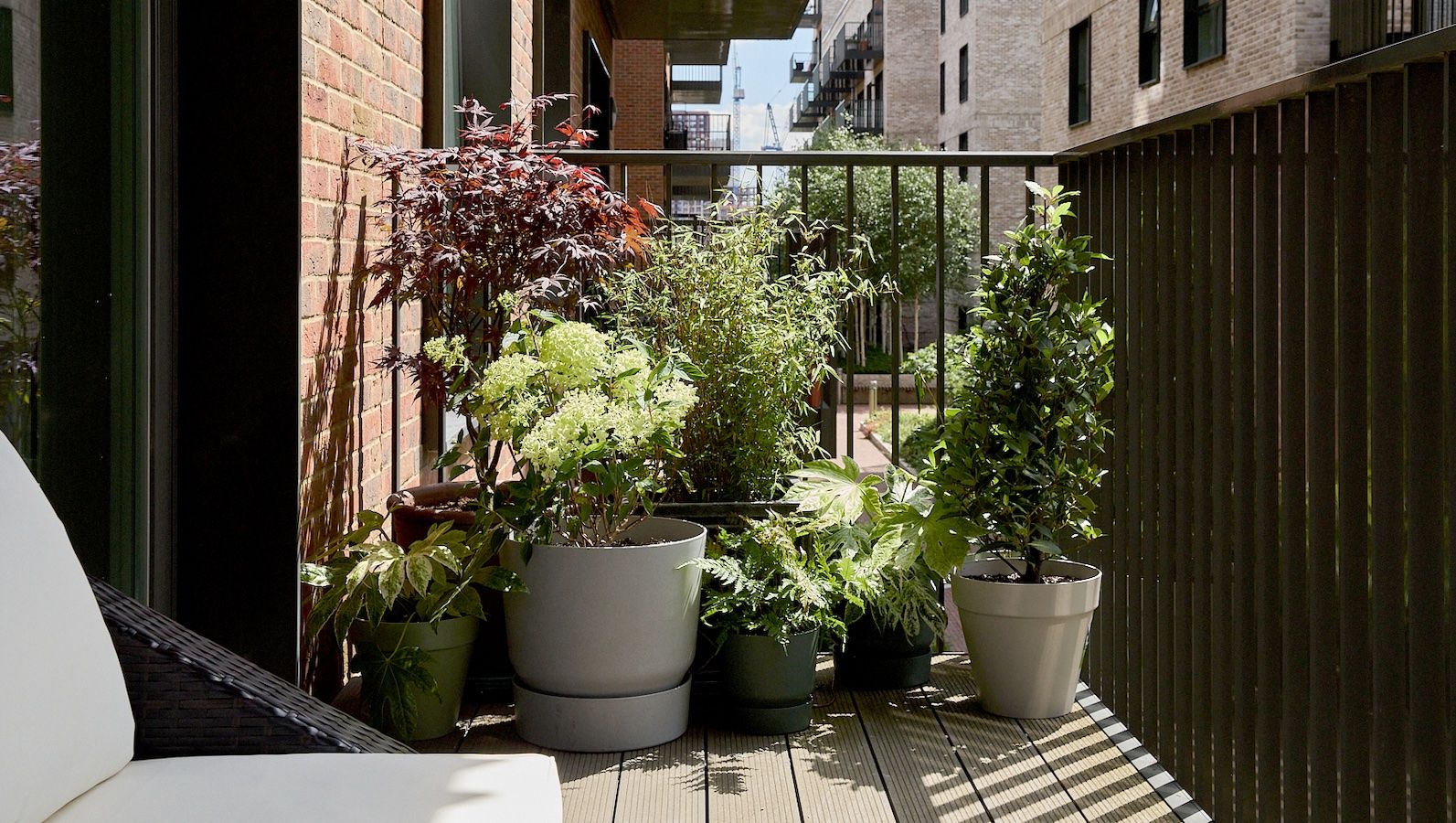
Last but not least, here’s a a few pointers to make sure your garden grows from strength to strength:
- The best time to sow seeds and plant up pots is in Spring. This is when plants are kicking into active growth with the increase in light levels and warmer temperatures.
- If you’re planting into pots, make sure they have drainage holes. Note that terracotta pots are porous and so dry out more quickly, meaning you’ll have to water more often.
- Whether your garden is exposed or under cover, don’t rely solely on rainfall to keep your plants hydrated, especially if you have a container garden. Often the rain isn’t heavy enough to soak through the whole pot, meaning only the top few inches get wet. When you water, water well. Water the soil, not the leaves and avoid getting water on flowers. If your garden gets lots of sun, water in the early morning or evening, when water won’t be lost to evaporation.
- If you’re growing plants in pots, it’s a good idea to feed them regularly throughout the growing season. You may need different kinds of plant food depending on what you’re growing. You can get plant food that promotes green leafy growth, and plant food that stimulates fruiting and flowering. You also get plant food specific to growing citrus trees and plants that like more acidic growing conditions.
- If your plants are in the ground, it’s a good practice to feed the soil around the plant with well rotted manure or compost.
- Outdoor plants are vulnerable to pests that fly in from other plants in the area. Watering and feeding your plant correctly should mean it’s healthy enough to fight off any infestations, a stressed plant is more vulnerable. The best way to control pests is to encourage a healthy ecosystem in your garden. Create hiding places for lady birds and hedgehogs, encourage birds and let spiders be. As a preventative measure to treat sap sucking insects like aphids you can spray your plants with a natural bug control spray, making sure to treat the tops and undersides of the leaves. There are also loads of natural repellents for slugs and snails. Insecticides and poisons are a last resort!
- If your garden is particularly windy or if you’re growing long, tender stemmed plants like Peonies, it’s a good idea to stake your plants with bamboo canes or metal structures. This will prevent stems snapping or flopping over as they get top heavy. Group your pots together so that they can support each other or position them against a wall as a buffer.
Now that you’re equipped with the basics, don’t forget to have fun!
Rewild your inbox
Plant tips. Special offers. No spam.
In this article
You might like
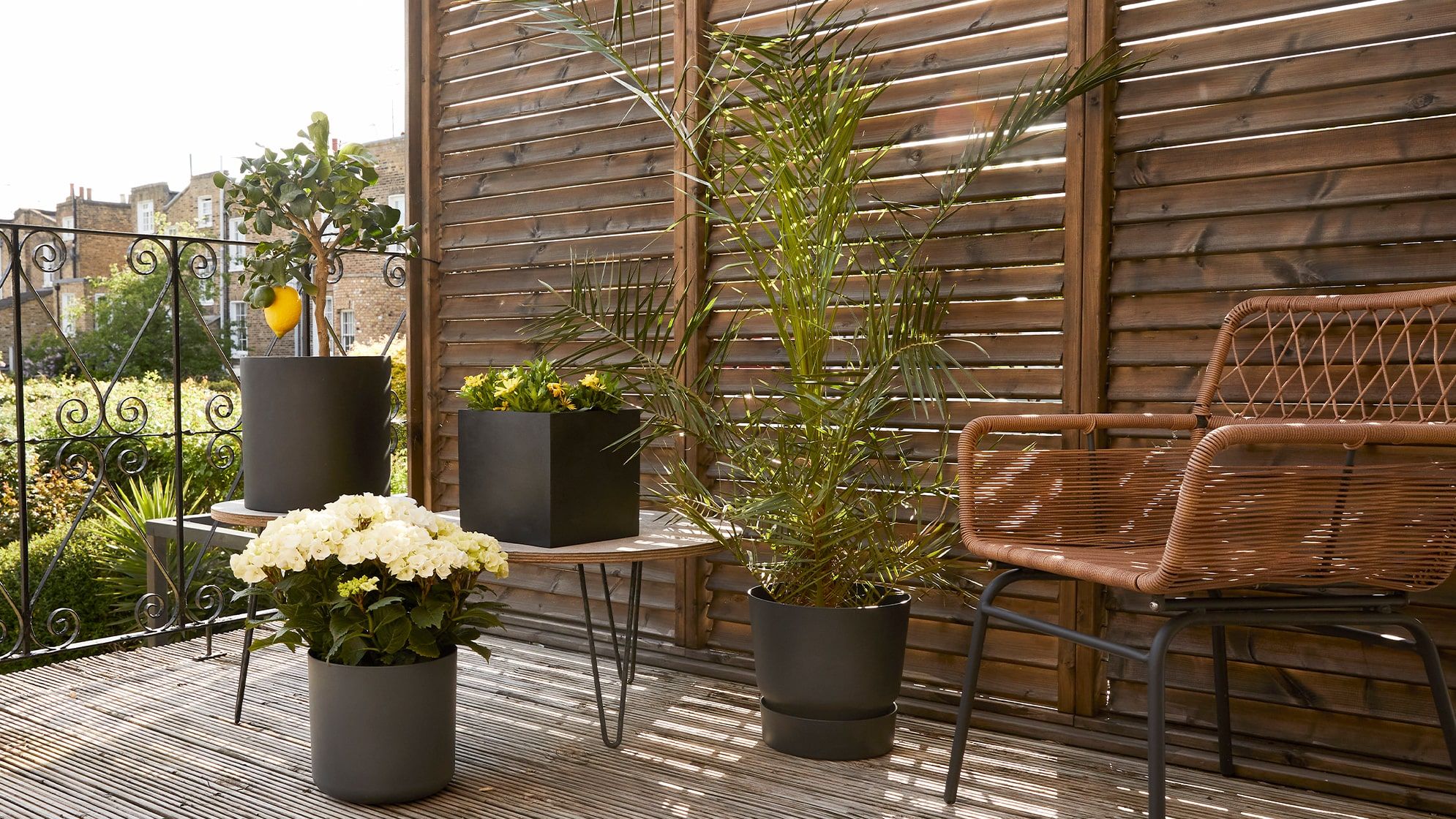
How to pick plants for your balcony
How to pick plants for your balcony
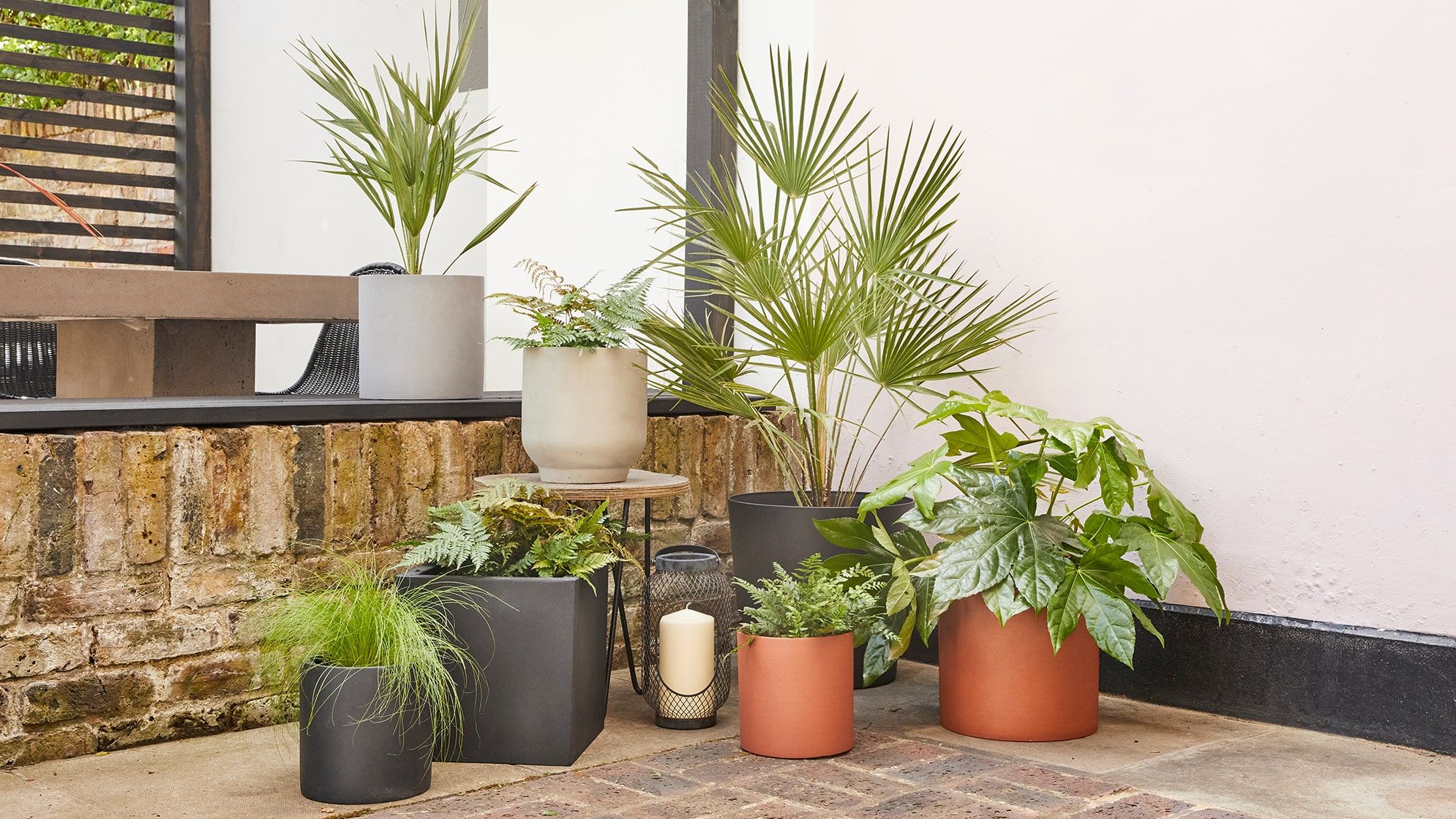
Plants for small outdoor spaces
Plants for small outdoor spaces
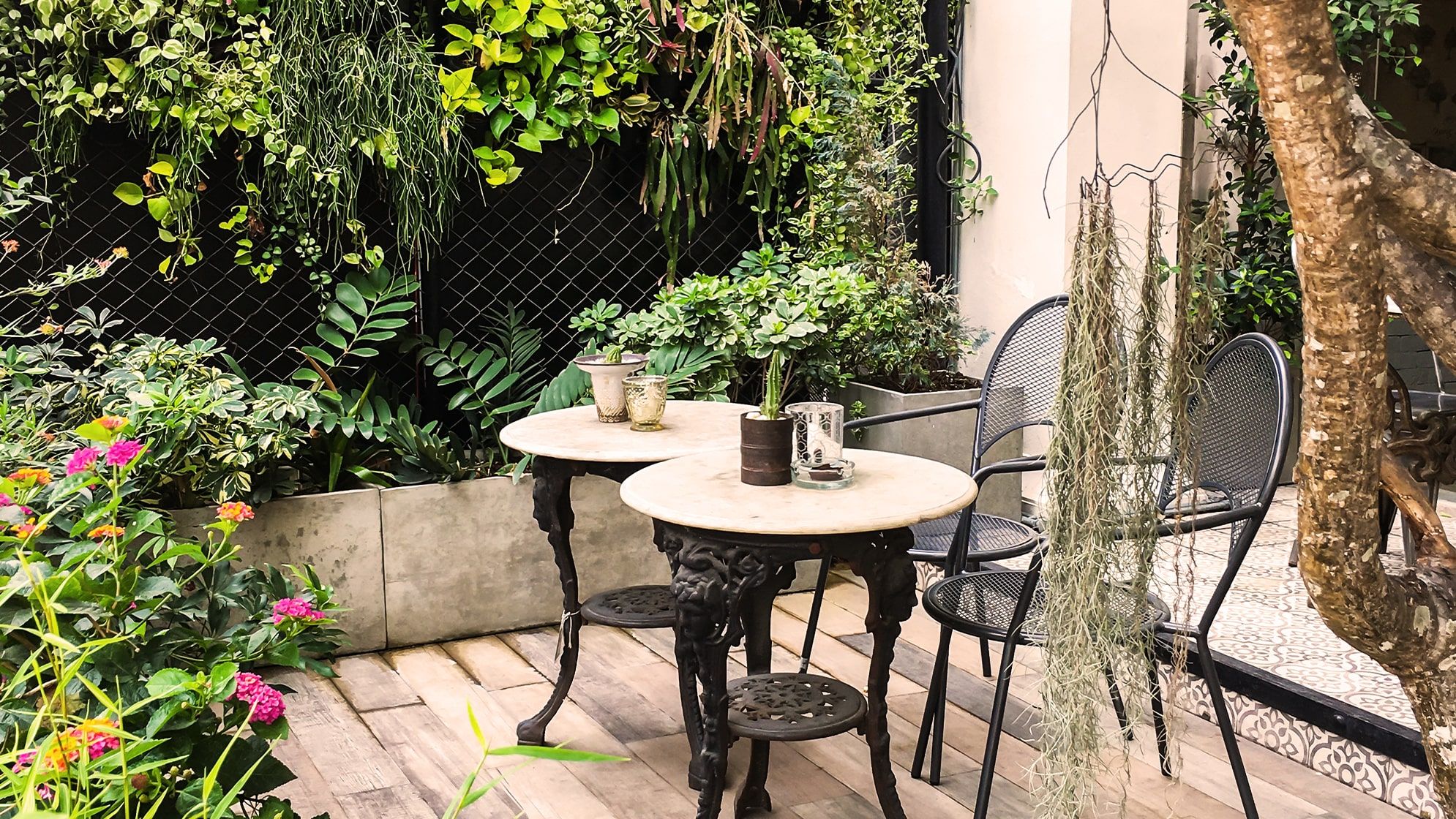
A space just for you - creating privacy with plants
A space just for you - creating privacy with plants














